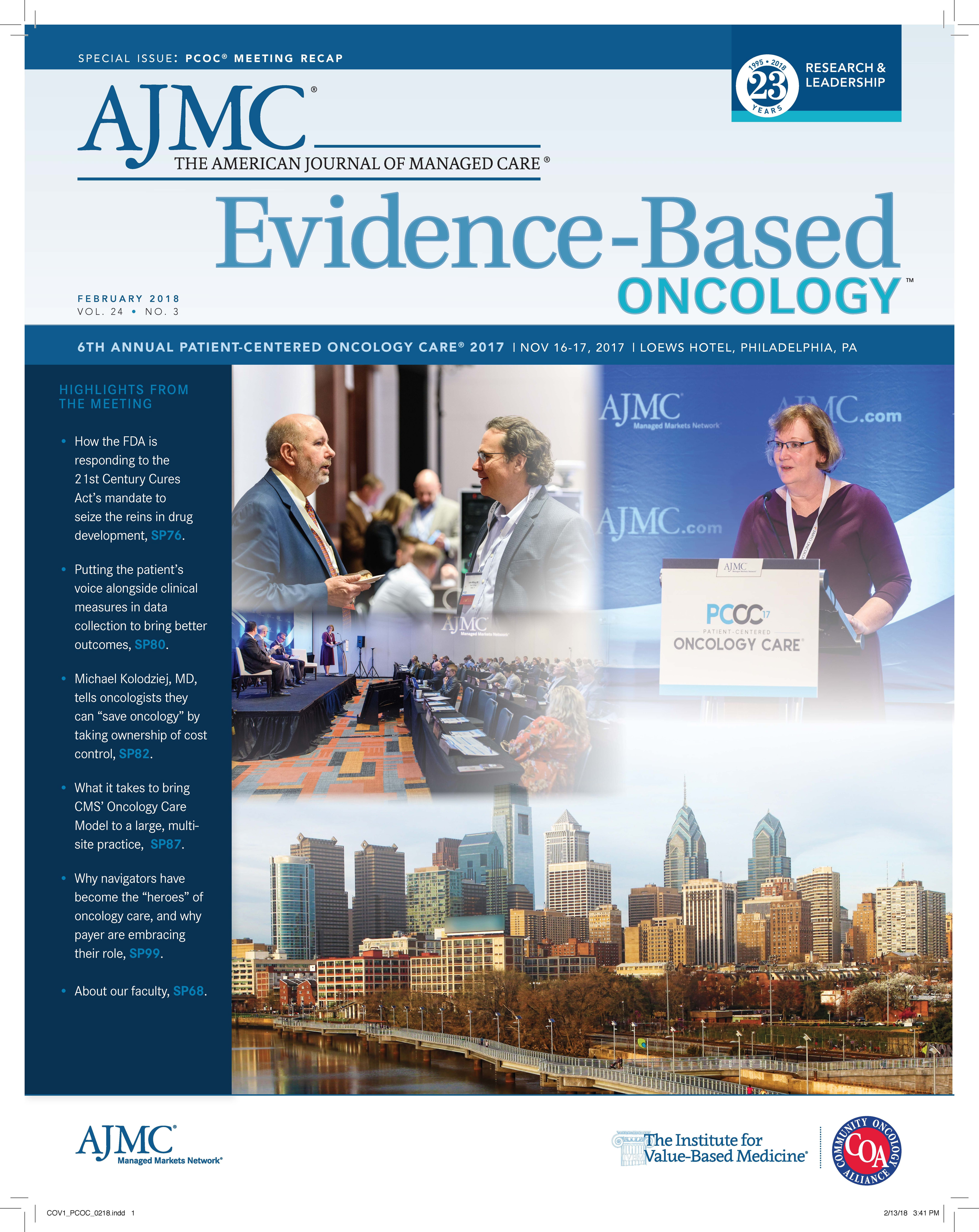- Center on Health Equity & Access
- Clinical
- Health Care Cost
- Health Care Delivery
- Insurance
- Policy
- Technology
- Value-Based Care
Panel Addresses Impact of Digital Data Collection and Utilization on Quality Assessment
Coverage of digital technology updates from Patient-Centered Oncology Care, November 16-17, 2017.
The use of digital data has become a prominent aspect in medicine as technology continues to advance. A panel at the Patient-Centered Oncology Care® meeting held in Philadelphia, Pennsylvania, November 16 and 17, 2017, explored the impact of digital data on different aspects of healthcare. The American Journal of Managed Care® presented the meeting.
The panel featured Torrie K. Fields, MPH, senior program manager for Advanced Illness and Palliative Care at Blue Shield of California; Viraj Narayanan, director of Life Sciences at Cota; and Kathleen Lokay, president and CEO of Via Oncology.
Fields said Blue Shield uses digital data to allow for greater flexibility in treatment pathways for those with serious illnesses. She emphasized the need to ensure that oncologists and patients are communicating and fully understand their treatment options. The 2 things to consider when assessing quality and utilization are understanding variance and considering the patient perspective.
“Spending that time to evaluate what a patient needs and also what the impact is on that family—and making sure that you’re not only thinking about survivorship planning but you’re also thinking about pain and symptoms—and measuring pain and symptoms in a systemic way [are] important,” Fields noted.
Fields also discussed minimizing risks in decision making, symptoms, and variability to ensure quality care. Blue Shield of California benchmarks practices against one another to compare them; however, those that have the highest quality rise to the top rather than those that focus on cost—therefore, quality becomes the higher priority.
Narayanan explained that Cota is able to extract data from electronic health records and organize the information to create an asset for the oncologist—providing the oncologist with all the essential data on the patient and the options for subsequent treatments. Furthermore, the Cota Nodal Address is a stratification tool that takes the patient information and labels it with a digital code. With this code, the system works to identify similar patients in the country and considers the treatments they are receiving and their outcomes. Narayanan emphasized the importance of looking at these real-world outcomes and identifying points of variance.
“So, what we’re hoping to accomplish, and what our mission is, [is] to optimize care for every individual patient while reducing the total cost of care for the population,” Narayanan stated.
Lokay discussed the process of ensuring quality in different treatment pathways. She explained that every decision is put into software that is fully transparent for the physicians who use the pathways. Therefore, they can provide immediate feedback if they disagree with the decision that a committee made about the treatment. Lokay called this the self-policing model.
She also noted the risks of real-world evidence, which must be controlled in order to avoid incorrect answers. Narayanan further explained that real-world evidence is not “clean data;” using it requires adhering to the right standards to make decisions from that information.
“I think one of the really big opportunities is to use evidence and pathways [and] understand how individual decisions are being made so we have the right solution architecture in place,” Narayanan stated.
Narayanan noted the patient-reported outcomes tool that measures how treatment decisions are affected by the feeling of the patient. The voice of the patient will continue to be emphasized in the future as a supplement to the data, Narayanan explained. Although tools that can combine such information are difficult and costly to administer, they are something to consider as provider partnerships scale up.
“We think that a big part of the future is making sure that we’re embedding that voice of the patient in combination with the clinical data as much as we can. And that’s not with payer data but directly with the patient. We think that if we can start to see that, then we can see, especially in end-of-life circumstances,
for example, there might be some light shed on what are the best decisions that can be made for patients,” Narayanan concluded.

Blister Packs May Help Solve Medication Adherence Challenges and Lower Health Care Costs
June 10th 2025Julia Lucaci, PharmD, MS, of Becton, Dickinson and Company, discusses the benefits of blister packaging for chronic medications, advocating for payer incentives to boost medication adherence and improve health outcomes.
Listen

